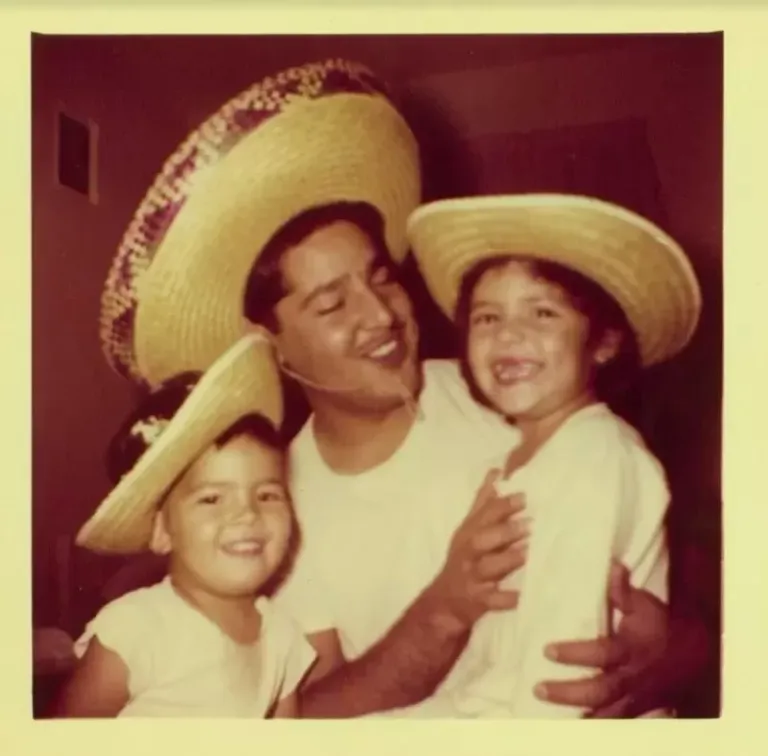
source
"Away from populated areas"
A report on the Trinity Plan and its implementation, published in 2010 by the Centers for Disease Control and Prevention (CDC), a public health research agency affiliated with the National Department of Health, states that It was initially considered for testing at eight locations. There were three locations in New Mexico, two in California, one in Texas and one in Colorado.
Scientists were looking for an area with a parallel region and a sunny climate, among many other features. One important criterion was that it was 'far from populated areas'.
The military chief of the Manhattan Project, Maj. Gen. Leslie Groz, originally backed an area of California but eventually went to the Jorda del Morto Desert in New Mexico for the test.
Anastasio Cordova was four years old when the United States conducted a nuclear test
Elections in the United States were announced in August 1944. By the beginning of 1945, more than 200 scientists, soldiers, technicians, doctors and construction teams had already settled on the site, secretly working to build the infrastructure needed for the test.
At 5:29 a.m. on July 16, 1945, a plutonium bomb was dropped on the top of a tower and detonated.
The bomber struck shortly after noon in front of a U.S. military base. The bomber struck shortly after noon in front of a U.S. military base. The bomber struck shortly after noon in front of a U.S. military base.
'Warmer than the sun'
The blast was more powerful than expected and produced "ten thousand times more heat than the sun." The teams that watched the test described the feeling of warmth that "stayed like a huge fireball."
People there said they saw a "giant cloud of smoke surrounded by a blue glow" followed by an explosion with "shockwave pressure" which "resonated for more than five minutes". '
The CDC says the nuclear explosion produced more than a dozen dazzling lights. The light was seen in New Mexico and parts of Arizona, Texas and Mexico.
The blast shattered windows in cities more than 150 kilometers away.
According to the report, out of the total six kilograms of plutonium in the center of the bomb, only 1.2 kilograms exploded while the rest was shattered into nuclear ash.
According to the document described above, "about 4.8 kg of plutonium remained undivided and dispersed into the atmosphere."
The cloud of smoke rose above 20 km and spread to three major parts. One east, another west and northwest, and a third northeast.
The cloud crossed the country's border, even being seen in New England in the northeast of the country.
Ashes falling from the sky
Although there were no residents in the area around the test site, about 15,000 people lived within a 25-kilometer radius, and about half a million lived within a 250-kilometer radius.
Tina Cordova belongs to the seventh generation of a family from Talrosa, a small town about 75 kilometers from the Trinity Test site, which was home to about 1,500 people at the time.
Tina was born 14 years after the test, but she remembers her grandmother telling her that day.

The Trinity Test was the name of the first atomic bomb plot in the United States
Tina Cordova told BBC Brazil that "according to her grandmother, she basically remembered the ash falling from the sky for several days after the explosion."
This white substance, which some locals thought was snow despite being hot, dyed the clothes and skin of people, animals, gardens, lakes, rivers and ponds and used its water when it rained. Used to collect for
"In 1945, there was no running water in the countryside of New Mexico," says Cordova. Most families had a pool.
"Everything was dirty."
Unaware of the danger they were facing, the locals continued to use contaminated water for drinking, cooking, bathing, cleaning the house, watering the gardens and watering the animals.
Poultry, cows and pigs were raised for meat, eggs and dairy products while they also hunted small wild animals and birds and also planted fruits and vegetables.
"And now everything was dirty," says Cordova. The soil and everything that grew on it, even the grass for the animals, was polluted.
The way of life was similar in other rural communities in the region, such as the village of Captain, just 100 kilometers from the test site, where the Genova Porcela family lived.
"My father grew corn, beans and potatoes," recalls Porcela. My mother had a garden, she planted vegetables. That's what we ate. The rainwater that flowed from the roof was carried through a pipe to the pool and we drank it.
Cordova says people in the region were exposed to ash-laden air for several days, contaminated by breathing, drinking contaminated water and eating.
The plan was secret
Instead of warning residents of the area of the dangers, the government, after the test, acted to suppress "any kind of news that could endanger the public and spread false information that the blast hit a remote location." It happened due to a fire in the ammunition.